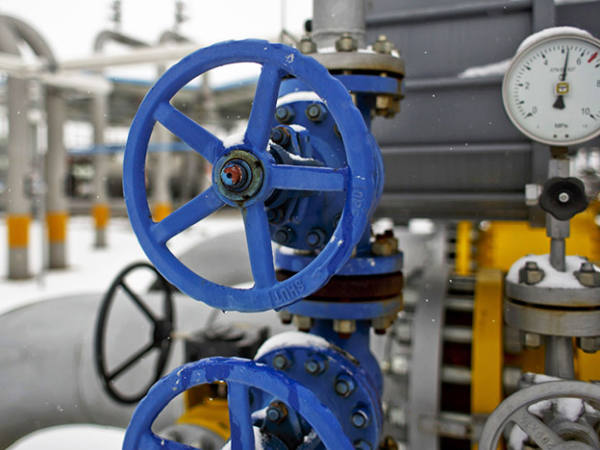As oil and gas markets have plunged into deficit over the past year, sending prices shooting up, the idea that oil and gas companies would fade away in a puff of stranded assets within a few years seems more unlikely than ever.
The scene had been set for high prices even prior to Russia’s invasion of Ukraine, as production struggled to keep up with rebounding demand around the world. The extra kick of removing much of Russia’s supply from western markets has driven record profits and shareholder returns from the major energy companies.
The increasingly desperate financial situation of those fuelling these profits at the end of the chain (by paying power bills or filling their cars up with petrol) has made this a political issue. So far, however, beyond some slight discounts in the retail energy sector, and a UK windfall tax that will only have a marginal impact, energy giants’ cash machines have been running at full capacity.
At the same time, the UK-listed energy majors, Shell (SHEL) and BP (BP.), are trading more cheaply than European and US-listed counterparts, despite handing back massive amounts of cash to shareholders through buybacks and dividends. The question is whether this rude financial health will continue – or whether short-term events have created another example of recency bias, as in 2020 when energy prices slumped and analysts duly slashed long-term forecasts.
In any case, the fact that Shell and BP work as short-term, high-return investments is now undeniable. Even after the one-third share price increases seen year-to-date, the two behemoths remain lowly ratedby investors.
Shell and BP sit on EV/Ebitda ratios of 3 times and 2.8 times, respectively, compared with Rio Tinto (RIO) on 3.9 times in the face of a collapse in the price of its chief product, iron ore. The US majors Chevron (US:CVX) and Exxon-Mobil (US:XOM) are also more highly rated at 5 times. And while cross-sector comparisons between tangible and intangible assets are unwise, it’s notable that, after a year in which commodity shares have surged while tech has struggled, even Facebook parent Meta (US:META) still trades at an EV/Ebitda ratio of 7.8 times.
In fact, Bernstein analyst Bob Brackett has used the comparison of tech mindsets being wrongly applied to the energy sector as a way of explaining the assumption that the energy transition will bring on immediate, large-scale demand destruction in the oil market.
Some had thought it would be a similar process to Apple (US:AAPL) inventing the iPhone and killing demand for the BlackBerry and most other keypad/keyboard-equipped phones within a few years. But solar and wind arriving on the energy scene and electric vehicle take-up increasing have not immediately killed oil and gas demand.
While we were not thinking of tech the time – and nor did we think the energy transition would be swift – we certainly got near the bottom of the oil market when shifting from neutral to negative on Shell in July 2020. At the time, its shares were trading at 1,234p, and they would subsequently fall below the 1,000p mark by October 2020. The company had taken a savage writedown from cutting its forecast oil and gas prices for the next few years, and operating profits had tumbled on the back of the price slumps that had already occurred.
Lessons had clearly been learnt from previous downturns, however.
Rather than continuing blithely onwards, European majors allocated a third less capital expenditure – a drop of around $15bn (£12.7bn) – on upstream projects this year than they did in 2019, according to International Energy Agency (IEA) estimates. Only the Middle Eastern national oil companies have increased spending on three years ago.
With that backdrop already in place, Russia invading Ukraine then upended global energy markets, given the aggressor’s position as a top global producer and key supplier to Europe.
Structurally, the consequences were stark. BP is still working out how to get rid of its 19.5 per cent stake in Rosneft, but quickly wrote the value down to zero, equating to a $24bn hit to the first-quarter bottom line. Shell, meanwhile, took a $3.9bn writedown on its Russia holdings at the end of the March quarter. But the Russian projects’ effect on balance sheets has largely been forgotten amid the earnings rush.
The finer points
It’s worth quickly sketching out just what Shell and BP do. They incorporate upstream operations, where oil and gas is extracted from the earth, refining operations, where those products are turned into the likes of petrol or liquefied natural gas (LNG), and then massive retail networks.
Closely linked to this supply chain are the marketing, or trading arms. Other key units at both majors are chemicals refining divisions, while both have growing green businesses in which renewable energy assets are held.
But the upstream divisions remain the main earners. RBC Capital Markets forecasts BP’s oil production and operations division earnings at $25bn this year, up from $10.3bn in 2021, while its gas & low carbon and customers & products divisional earnings are each around $11bn, up from $7.5bn and $3.3bn, respectively.
Customers & products includes a wide range of businesses, from petrol stations to aviation fuel and Castrol lubricants. If higher oil prices alone weren’t enough, refining margins have soared this year as well – BP reported a June quarter refining margin of $45.50 per barrel, compared with $13.70 a year ago.
In recent years both companies have seen a shake-up in structure and, to a degree, in capital spending frameworks. BP’s was the more extravagant shift taking place under Bernard Looney, who was appointed to the top job in February 2020. His remit was to take BP into the next decade, and he soon laid out a ‘Beyond Petroleum’ 2.0 plan that would see greater renewables investments and a 40 per cent cut to production by 2030, compared with 2019 levels.
This will be achieved through divestments and allowing some projects to decline. RBC analyst Biraj Borkhataria calls BP “one of the more aggressive companies regarding its low carbon ambitions”, and notes its renewables targets are proportionally larger than those of peers.
This push was made clear in the Crown Estate early 2021 seabed auction result – BP put up an estimated £900mn for two licence areas to build wind farms in the Irish Sea, while it also agreed to build a new wind farm off the coast of Scotland earlier this year alongside joint venture partner EnBW, the German utility.
In this context, the restraint in bringing on new supply has an additional advantage: as well as ensuring the market remains tight and prices remain elevated, it also helps lower company emissions. BP has been keen to underline its £18bn spending plan in the UK in recent months as the government has pushed for more domestic production.
A Carbon Tracker report released earlier this year said that the major oil companies were unlikely to commit to massive new greenfield projects again, in an effort to avoid putting billions into assets that could end up coming online just as demand falls back. It’s not the first time we’ve heard this, however.
Often during upcycles, commodity companies say they’ve cracked the code and set themselves up to keep performing even if prices drop off again.
It happens in mining when major operators don’t immediately ramp up production of a metal that is trading at elevated levels. The US onshore oil and gas industry has been another example this year – producers have been reluctant to plunge capex into increasing production despite $100-plus prices per barrel.
But the cycle comes for us all – here is former Shell chief executive Peter Voser in 2013, his last year in charge before current boss Ben van Beurden took over: “Our strategy is to deliver sustainable growth in cash generation through the business cycle, underpinning Shell’s competitive dividends and returns,” he said at the release of Shell’s second-quarter results nine years ago. “We are not targeting oil and gas production volumes; rather we are focusing on financial performance.”
What happened next was as expected in light of those comments: Shell reported four years straight of sales declines and didn’t hit the same profit level for another five years. Despite the records set in the past 12 months, its compound annual growth rate (CAGR) for the past 10 years is still negative for sales, cash profits and net income, according to FactSet data. Dividend growth lasted until 2020, when Shell cut its overall payout bill from $15bn in 2019 to $7bn, or from 187¢ a share to 63¢. BP has similar 10-year CAGR figures.
Here comes Covid
From late 2020 onwards, things started looking up as lockdowns ended. Shell had come out of dire straits with a lower dividend burden and impairments it could reverse, adding to the bottom line. Alongside BP, the company also shed thousands of jobs and continued selling off older assets. The funds from these were largely handed on to shareholders.
But is this truly a fresh start for the majors: low levels of debt, forecasts of continued high free cash flow, and dominant market positions in areas critical for the wider global economy? What are the options for investors who have sold out in the meantime? Alternatively, is now a high point, in spite of the extremely high dividend and free cash flow yields?
The question can be boiled down to whether Shell and BP will remain short-term, high-return investments, or if they should spend another few decades in your portfolio. And industry observers vary in their thinking around the current upturn, and indeed the wider energy bull market.
“We’ve always extrapolated [the place in the cycle] from one or two data points in the time that we’re in,” said Tullow Oil (TLW) chief executive Rahul Dhir. “The optimism is always misplaced, and the pessimism is always misplaced.” Dhir says he has gone through six upcycles in his career.
Much could still come down to those exploration decisions. The IEA has made the point that exploration spending is still “well below” levels seen in the 2014-15 bear market, although it acknowledged 2021 saw a strong rebound in project green lights. “The total volume of oil and gas achieving [a final investment decision] increased by nearly 85 per cent in 2021 to around 24bn barrels of oil equivalent, reverting to the pre-pandemic level, with national oil companies responsible for more than 75 per cent of the total,” the agency said.
Old behaviours may creep back simply because prices are so high. Berenberg sees oil prices staying over $100 a barrel for 2023, before coming down to $85 for 2024. Liberum has gas staying very high for years – still almost $5 per metric million British thermal unit in 2025, compared with $3.12 in 2021.
If these prices stay at elevated levels, they could also have a material impact on demand – particularly if the consequences of a potentially fractious winter for the UK and Europe linger long in the memory. “If higher prices persist, you’re potentially going to see accelerated shifting away from fossil fuels, whether that’s capital-rich individuals replacing boilers with heat pumps or the faster adoption of electric vehicles,” said Mike Coffin, head of oil, gas and mining for Carbon Tracker and a former BP geologist.
He added that while the war in Ukraine had brought on the need for more non-Russian oil and gas, governments handing out massive incentives for new large-scale projects were going down the wrong path. The assumption that initial tax breaks would be paid back many times over once production starts would prove incorrect if demand were to drop off as forecasted later this decade. Coffin said only the likes of onshore shale projects would make an immediate difference to the current crisis.
But the short-term outlook is not in doubt.
“Strong commodity prices continue to provide a tailwind for the majors, and the virtuous circle of higher free cash flow, continued de-leveraging and multi-decade high shareholder returns should support the BP investment case,” said RBC’s Borkhataria earlier this month.
He pointed to BP’s buyback scheme that will reduce the share count, cut the overall dividend cost and therefore push up the quarterly payout, too. BP is set to buy back more than $10bn worth of shares this year, up to 20 per cent of daily volumes.
Shell’s approach is slightly different but the shareholder returns are also extravagant. “Looking forward, we see Shell repurchasing $21bn or 12 per cent of its market cap this year, providing significant capacity to raise [the dividend] going forwards without increasing the absolute dividend burden,” Borkhataria said after the major’s interim results at the end of July.
Shell CFO Sinead Gorman laid out the generous investor handout thinking in the June quarter earnings call: “Where the share price is at the moment, it made sense to…go for the share buybacks,” she said. There should be $6bn in buybacks done by the next results announcement, on 27 October. The $7.4bn handed over in the June quarter came from the gas price, refining margins and divestment cash coming in, Gorman added.
The dividends themselves are not so groundbreaking – BP cut its payout to 23¢ a year, compared with over 40¢ pre-2020, while Shell hit a total payout high of 194¢ in 2018, as per FactSet. Still, this year and next year look pretty good from an investor standpoint.
2030 vision
What comes next is less clear. On top of its production decline plan, BP has said it would bring in up to $10bn a year in cash profits from “transition growth” businesses by 2030. For comparison, its oil and gas business (upstream and midstream) is forecast to have annual cash profits of $33bn a year to 2025 and between $30bn and $35bn out to 2030.
Carbon Tracker has looked at how supply and demand could shift the market in the coming years, with the complication of a potentially seismic fall in oil demand in the second half of the 2020s.
The organisation, which has pushed for a reduction in oil and gas production for climate reasons, used a scenario in which oil demand peaks in the mid-2020s before falling off rapidly called the ‘forecast policies scenario’ (FPS) from the catchily named Inevitable Policy Response consortium. Outside of already sanctioned projects such as Azeri Central East, a BP project in Azerbaijan, this assumes few new assets come online in the next few years and that new global supply comes from national giants such as Saudi Aramco (SA:2222). This has largely been the state of play in recent years, although Aramco says it now has little excess capacity to bring on.
Carbon Tracker said it was in Aramco and other state producers’ interests to keep oil prices lower than current levels to avoid accelerating demand destruction. But the FPS scenario is the opposite of the gradual easing of demand seen in IEA and the majors’ own forecasts, as it sees “tough climate policies along with rapid take-off in electric vehicle sales” from 2025 onwards pushing demand down swiftly. This assumption has global oil demand falling to 60mn barrels of oil per day (bopd) in 2040, from the current 100mn bopd.
For BP and Shell investor Anthony Cross of the Liontrust Special Situations Fund – which looks for companies with a “durable competitive advantage” – there is little question both companies will continue to squeeze the most out of their incumbent positions, whichever of these outcomes materialises.
“These are businesses with very strong distribution networks… Shell is the biggest retailing business in the world, it has the biggest LNG network in the world, it’s one of the three energy trading businesses in the world,” he said on the Investors’ Chronicle Interviews podcast this week.
Cross also noted improvements in how cash is used across the industry, acknowledging that returns were previously not as strong as they should have been. But this has changed as exploration and other capex has come down. “Overall, we would expect the returns of these companies to be improving,” Cross concluded.
There are plenty of interesting details to come in the story of how Shell and BP will make it through the energy transition – what will forecourts look like in 10 years, and what kind of margin will they make from sending wind power into an electric vehicle?
But what’s clear is investors will struggle to find a better business model for the current volatile time. The financial creases of previous years at Shell and BP, such as high debt, have largely been ironed out, while the current fashion for avoiding big new investments (government sweeteners aside) means capital should increasingly flow to greener projects.
A share bought today would likely be paid back in dividends in just a few years, with RBC forecasting another $10bn in buybacks for BP this year and an 8 per cent dividend uptick for both London-listed majors in 2023.
The usual caveats occur – there is some room for Saudi Aramco and other national oil producers to improve supply, despite protestations otherwise, and Covid-19 has shown demand shocks can also come along anytime. Lower net debt positions ($20bn for Shell against $60bn a few years ago) mean the risks are lower, now, however.
While aware of the chance of once again picking just the wrong time to shift stance, we move both Shell and BP to a neutral rating from sell. In the short term, they are offering significant returns at low valuations. But we are steering clear of a completely bullish stance as another market turnaround could come sooner than expected, especially as real wages get pummelled by inflation – in effect making the majors victims of their own success.











